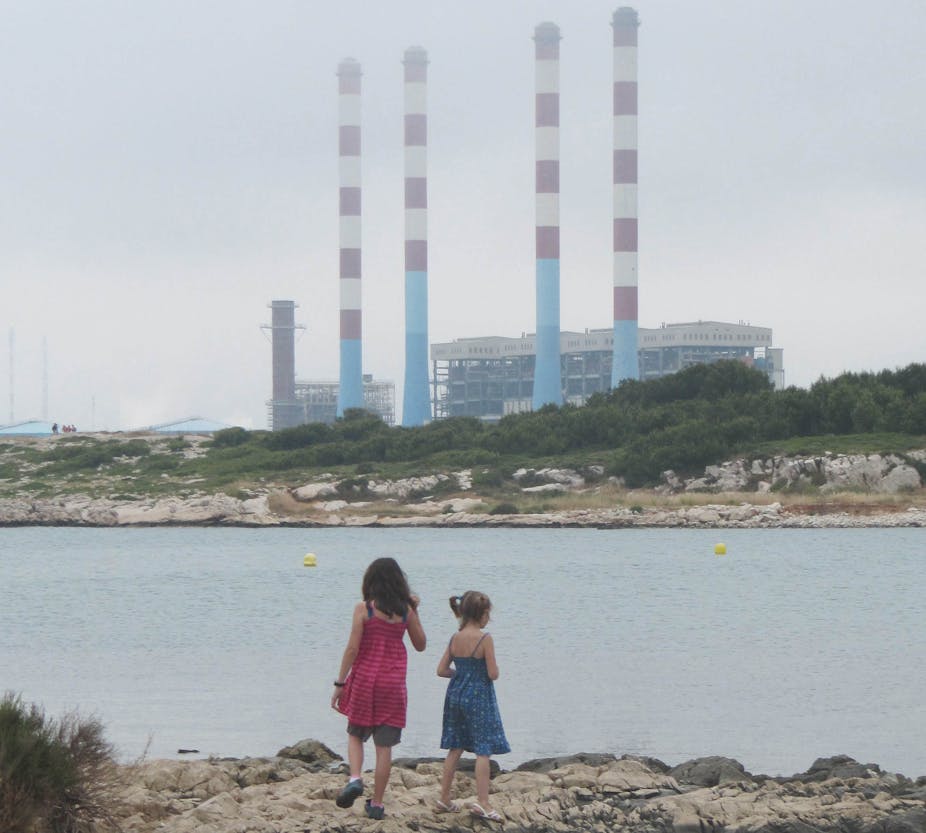The Earth energy balance – the difference between energy/heat absorbed by the Earth from solar radiation and the energy/heat emitted back to space – is currently offset by the cooling effect of sulphur aerosols.
These aerosols are emitted by fossil fuels and industry, and effectively act as a global geo-engineering process.
Had it not been for this short-lived cooling effect the internationally agreed maximum temperature target of 2°C would already be transcended.
According to the Intergovernmental Panel on Climate Change, mean global temperature has risen by 0.8°C since 1880, which translates to more than 4°C in the polar region of northern Canada, Greenland and Siberia.
This triggered ice melting that accelerated between 2002 and 2010, and a related sea level rise at a rate of up to 3.2 mm per year between 1993 and 2010.
The melting of Arctic ice leads to increased evaporation and can result in the advance of cold fronts into the north Atlantic.
Prior to the Copenhagen conference in 2009, the European Union obtained the agreement of relevant partners, including China, India, Russia, and the United States, to commit to an upper two-degree ceiling on further rise in mean global temperature in order to avoid the risk of dangerous climate change.
But a rise beyond two degrees may lead to tipping points in the atmosphere and ocean system.


As stated by the NASA climate science group:
If humanity wishes to preserve a planet similar to that on which civilization developed and to which life on Earth is adapted, paleoclimate evidence and ongoing climate change suggest that CO2 will need to be reduced from its current 385 ppm to at most 350 ppm. The largest uncertainty in the target arises from possible changes of non-CO2 forcings. An initial 350 ppm CO₂ target may be achievable by phasing out coal use except where CO₂is captured and adopting agricultural and forestry practices that sequester carbon. If the present overshoot of this target CO₂is not brief, there is a possibility of seeding irreversible catastrophic effects.
With current CO₂ levels rising to around 28,000 million tonnes by 2010, the NASA study [1] implies global warming committed to reach 2.3 degrees once the aerosol effect dissipates.
This effective, though unintended, geoengineering measure, acting as a shield from a near-doubling of global warming, also lowers ocean pH on top of CO₂ sequestration.
Had the proposed Australian reduction of 5% in the rate of carbon emissions by 2020 been a figure adopted world-wide, global emissions would be reduced by an amount hardly causing a dent in the current trajectory toward levels at which the polar ice sheets are further destabilised.
It is not clear whether deep reductions in carbon emissions will be sufficient to stem the amplifying feedbacks associated with greenhouse gas warming and ice/water interactions.
Barring an indefinite maintenance of sulphur aerosol emissions, deep emission cuts need to be accompanied by atmospheric CO₂ draw-down by means of fast-track tree planting, application of biochar methods and chemical CO₂ sequestration.
As shown by the intensifying spate of extreme weather events around the globe the alternative bears no contemplation.

